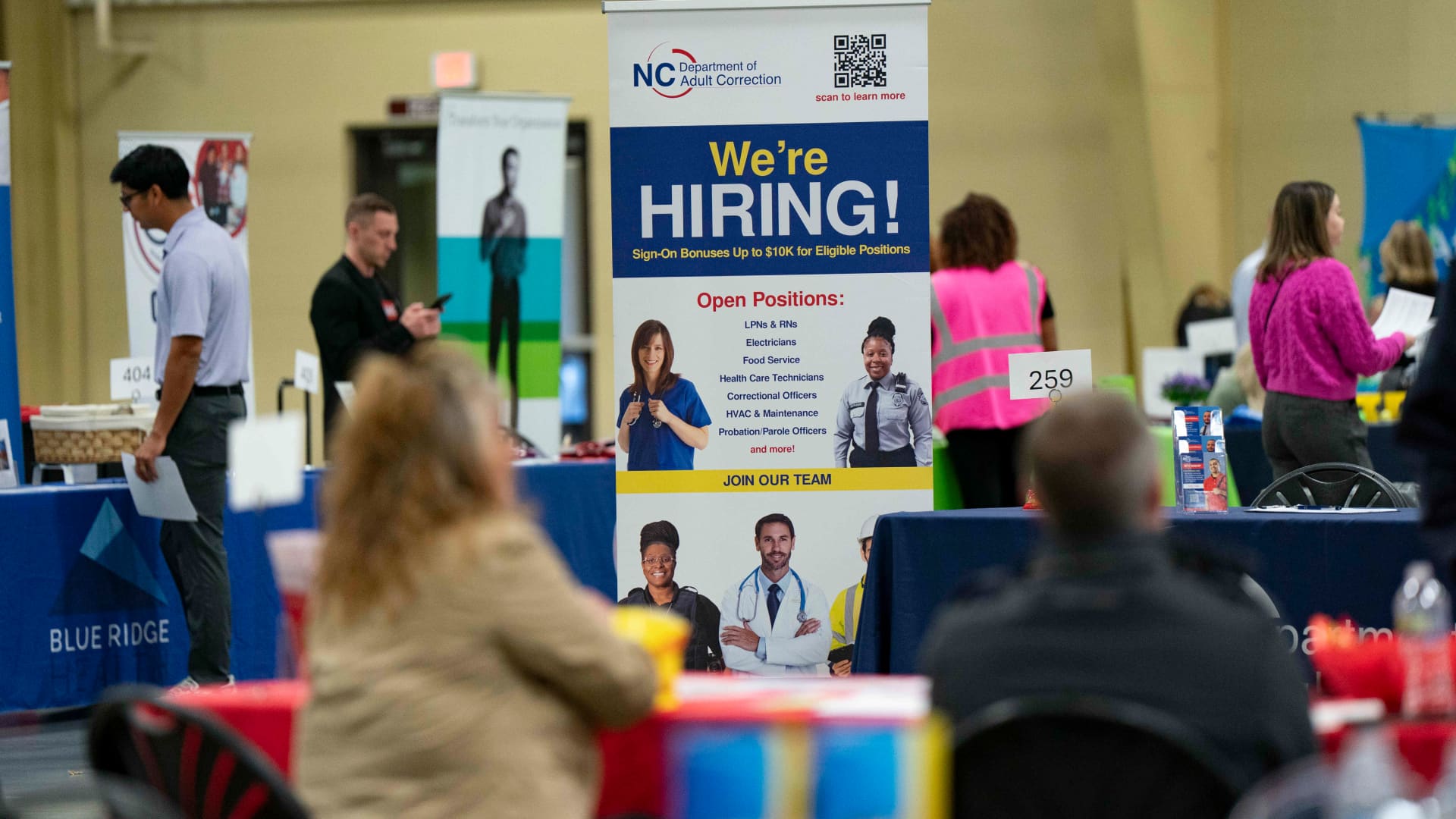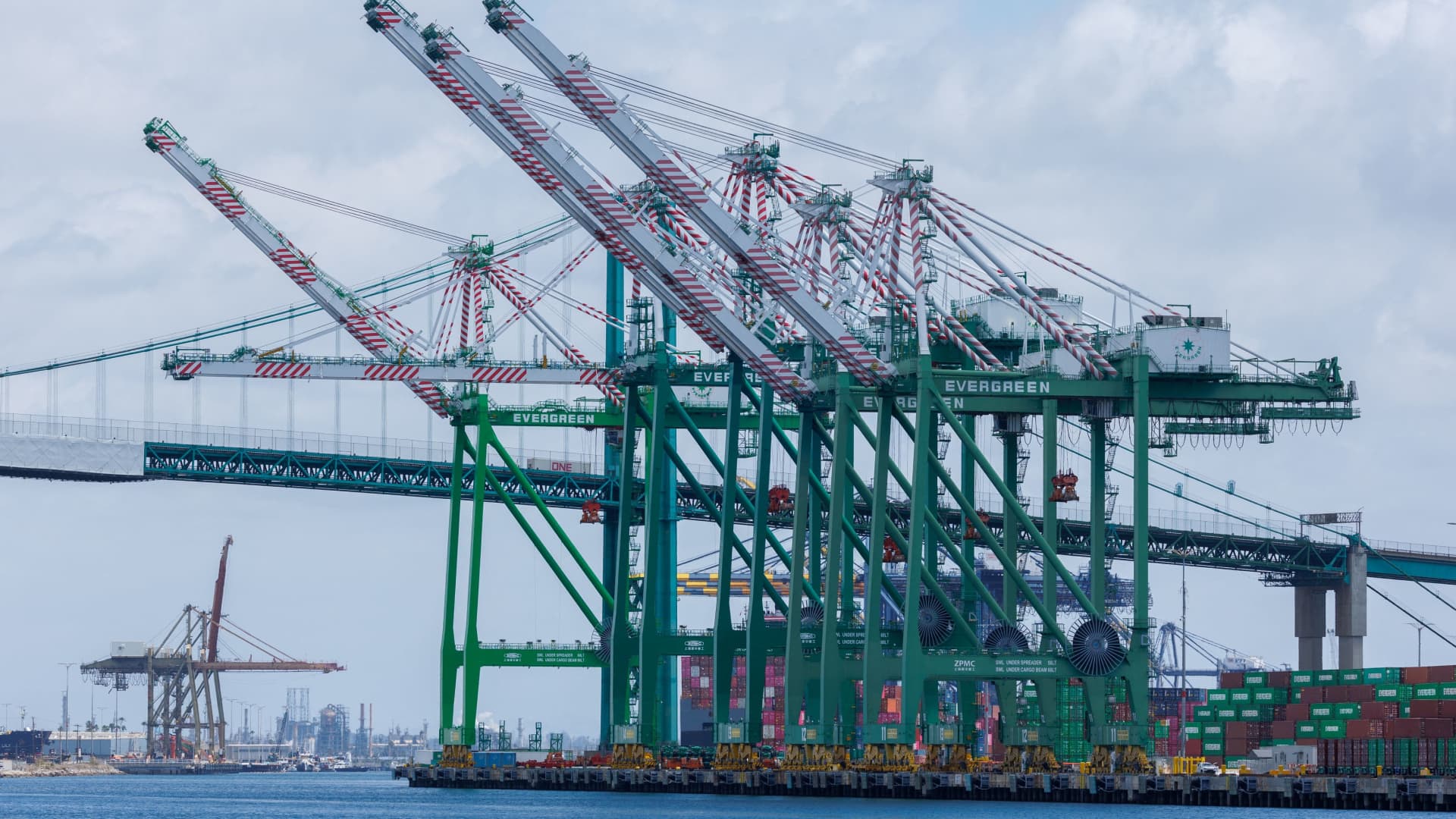Economics
Joe Biden’s weakness among Latinos threatens his re-election
Published
1 year agoon

In Arizona, a growing Hispanic electorate should help Democrats. Yet Donald Trump is gaining ground
Image: Caitlin O’Hara
| Phoenix and Tucson
Hispanic population in Arizona, % of total
Sources: Pew Research Centre; US Census

Arizona, Hispanics as % of population
By census tract, 2021
Share of total votes cast by Hispanic voters, 2020, %

Arizona, Hispanics as % of population
By census tract, 2021
Share of total votes cast Hispanic voters, 2020, %

Arizona, Hispanics as % of population
By census tract, 2021
Share of total votes cast
by Hispanic voters, 2020, %


Top: A Phoenix food vendor who declined to be named said he intends to vote for Donald Trump in 2024.
Bottom: Arizona State University student Jazlyn Gonzalez, 19, said that while the US presidential vote in November “is really important”, she is as yet undecided about her choice. Image: Caitlin O’Hara

“Who do you think would do a better job
handling the following issues as president?”
Source: YouGov/The Economist

“Who do you think would do a better job handling the
following issues as president?”, United States, %

“Who do you think would do a better job handling the
following issues as president?”, United States, %


Top: Samual Lopez, 31, who said he is voting for Donald Trump in November, added that he is frustrated at the US sending aid to Ukraine when there is a large population of homeless people in Phoenix.
Bottom: Ayling Dominguez, 26, who works as an advocate for immigrant rights, said Latino voters should “evolve the way we see our power and choices in electoral politics.” Image: Caitlin O’Hara
Sources: YouGov; Catalist; Redistricting Data Hub; US Census Bureau; OpenStreetMap; Pew Research Centre; Federal Election Commission; All About Redistricting; ArcGIS; The Economist
You may like
Economics
Friday’s jobs report likely will show hiring cooled in May. What to expect
Published
5 hours agoon
June 5, 2025
There seems little doubt now that hiring slowed considerably in May as companies and consumers braced for higher tariffs and elevated economic uncertainty. The main question is by how much.
A small dip from the recent trend likely wouldn’t be viewed as worrisome. But anything beyond that could set off a fresh round of fears about the labor market and broader economy, possibly pushing the Federal Reserve into a quicker-than-expected interest rate action.
Economists expect that when the Bureau of Labor Statistics reports the May nonfarm payroll numbers (NFP) Friday at 8:30 a.m. ET, they will show a gain of just 125,000, down from an initial tally of 177,000 in April and the year-to-date monthly average of 144,000. That represents a slide but not a collapse, and markets will hinge on the degree of decline.
“Going into the NFP print, expectations have been reset lower and a reading of around 100,000 (vs. the 125,000 expected by the consensus) could fall in the ‘not-as-bad-as-feared'” camp, wrote Julien Lefargue, chief market strategist at Barclays Private Bank. “Anything below the 100,000 mark could reignite recession fears, while a stronger-than-expected print could perversely be negative for risk assets as it would likely put upward pressure on [Treasury] yields.”
Consequently, the report will be a balancing act between competing concerns of a slowing labor market and rising inflation.
Data tell different stories
A broad range of sentiment indicators, including manufacturing and services surveys as well as gauges of small business sentiment, indicate flagging optimism toward the economy, led by worries over tariffs and the inflation they could ignite.
Moreover, hard data this week from ADP showed that private payrolls essentially were flat last month, growing by just 37,000 in May, a two-year low. Jobless claims also have also recently been edging higher, with last week hitting the highest since October.
Friday’s payroll report, then, could be a key arbiter in determining just how much worry there is in the economy where it counts, namely the labor market, which in turn provides clues about the strength of consumers who drive nearly 70% of all U.S. economic activity.
“We do think it’s going to slow down. We do think that tariffs are going to start biting a little bit,” said Dan North, senior economist at Allianz Trade North America. “Everybody hates the economy, but if you look at the hard data, it’s not so bad.”
North expects it will still take several months before the sentiment surveys — “soft” data — take their toll on other economic readings, such as payrolls.
Tariff impacts are key
In the interim, markets will be watching further developments on the trade front as President Donald Trump continues in a 90-day negotiating window that investors hope will ease some of the “Liberation Day” tariffs that are on pause.
“We don’t expect to see a crash this month, probably not the month after this, but certainly a weight on the economy, not just from the tariffs but also from uncertainty. It’s as if tariff policy is a specter in the mist,” North said.
There are a variety of views on Wall Street, from Goldman Sachs, which expects a below-consensus 110,000 growth in payrolls, to Bank of America, which is looking more for a number around 150,000.
From there, investors will try to figure out whether the latest numbers move the needle on Fed policy, with markets currently not expecting further interest rate cuts until September. Most policymakers of late have been focusing on tariff-induced inflation impacts, with the caveat that they are watching the jobs numbers as well.
“One encouraging sign about economic activity is the resilience of the labor market,” Fed Governor Adriana Kugler said Thursday in New York. “We will get the May employment report tomorrow, but the data in hand indicate that employment has continued to grow and that labor supply and demand remain in relative balance.”
The consensus estimate also sees the unemployment rate holding at 4.2%, while average hourly earnings are projected to show a 0.3% monthly gain and 3.7% annual increase.

Layoffs are illustrated by an oversized pair of scissors, that looms over seven workers sitting in office chairs suspended by strings.
Mathisworks | Digitalvision Vectors | Getty Images
While Elon Musk has ended his government cost-cutting initiative that resulted in thousands of federal job cuts, mass layoffs are still roiling corporate America.
Companies are under increasing pressure to trim costs against the backdrop of global economic uncertainty brought on by President Donald Trump‘s tariff policies. Several companies have announced price hikes. Layoffs mark another way to pull back.
Trade tensions have also raised concerns about the general health of the U.S. economy and the job market. While the April jobs reading was better than expected, a separate reading from ADP this week showed private sector hiring hit its lowest level in more than two years.
Though many companies declined to provide specific reasoning for announced workforce reductions — instead lumping the layoffs in with larger cost-cutting strategies or growth plans — tech leaders are starting to cite artificial intelligence as a clear consideration in hiring and headcount adjustments.
Klarna CEO Sebastian Siemiatkowski told CNBC last month the fintech company has shrunk its headcount by 40%, in part due to investments in AI. Likewise, Shopify CEO Tobias Lütke told employees in April that they will have to prove why tasks can’t be performed by AI before asking for more headcount and resources.
Here are some of the companies that have announced layoffs in recent weeks:
Procter & Gamble
Pampers and Tide maker Procter & Gamble said on Thursday it will cut 7,000 jobs, or about 15% of its non-manufacturing workforce, over the next two years as part of a restructuring program.
CFO Andre Schulten said during a presentation that the company is planning a broader effort to implement changes across the company’s portfolio, supply chain and corporate organization.
The company did not specify the regions or divisions that would be impacted.
Microsoft
Microsoft said last month it would reduce its workforce by about 6,000 staffers, totaling about 3% of employees across all teams, levels and geographies.
A Microsoft spokesperson told CNBC at the time one objective of the cuts was to reduce layers of management. The company announced a smaller round of layoffs in January that were performance-based. The spokesperson said the May cuts were not related to performance.
Citigroup
People walk by a Citibank location in Manhattan, New York City, on March 1, 2024.
Spencer Platt | Getty Images
Citigroup said in a statement Thursday it plans to reduce its staff by around 3,500 positions in China.
The cuts mostly affect the information technology services unit, which provides software development, testing and maintenance. Some of the impacted roles will be moved to Citi’s technology centers elsewhere, the bank said.
Under the leadership of CEO Jane Fraser, Citi has undertaken a large-scale reorganization with an eye toward profitability and stock performance. The bank consistently underperformed its major bank peers in recent years.
Citi announced a broader plan last year to reduce its workforce by 10%, or about 20,000 employees globally.
Walmart
Last month, Reuters reported Walmart was planning to slash about 1,500 jobs in an effort to simplify operations. The teams affected include global technology, operations and U.S.-based e-commerce fulfillment as well as Walmart Connect, the company’s advertising business.
Walmart employs around 1.6 million employees, making it the largest U.S. private employer. CFO John David Rainey told CNBC during an interview last month that Walmart shoppers would likely see price increases at the start of the summer in response to tariffs.
Klarna
Klarna’s Siemiatkowski told employees last month that the Swedish buy now, pay later firm would lay off 10% of its global workforce.
“When we set our business plans for 2022 in the autumn of last year, it was a very different world than the one we are in today,” Siemiatkowski told employees.
The week before that announcement, he told CNBC that Klarna has shrunk its workforce by about 40% due to investments in AI and natural attrition in its workforce.
CrowdStrike
Cybersecurity software maker CrowdStrike announced plans last month to cut 500 employees, or about 5% of its staff.
CEO George Kurtz in a securities filing attributed the move largely to artificial intelligence.
“We’re operating in a market and technology inflection point, with AI reshaping every industry, accelerating threats, and evolving customer needs,” he said, adding that the move was part of the company’s “evolving operating model.”
Disney
A water tower stands at Walt Disney Studios on June 3, 2025 in Burbank, California.
Mario Tama | Getty Images
The Walt Disney Company said earlier this week it plans to cut several hundred employees worldwide across several divisions. The layoffs impact teams in film and TV marketing, TV publicity and casting and development.
The cuts are part of a larger effort to operate more efficiently, a Disney spokesperson said.
Chegg
Online education firm Chegg said last month it would lay off 248 employees, or about 22% of its workforce. The cuts come as AI-powered tools like OpenAI’s ChatGPT take over education.
CEO Nathan Schultz said on the company’s May earnings call that the layoffs are part of a cost reduction plan and he expects cost savings of between $45 million and $55 million this year, followed by a further $100 million to $110 million next year.
Amazon
Amazon said in May it would eliminate about 100 jobs in its devices and services division, which includes the Alexa voice assistant, Echo hardware, Ring doorbells and Zoox robotaxis.
A spokesperson for Amazon told CNBC at the time the decision was part of an ongoing effort to “make our teams and programs operate more efficiently.”
The cuts come as CEO Andy Jassy has sought out cost-trimming efforts at the company. Since the beginning of 2022, Amazon has laid off roughly 27,000 employees.
Warner Bros. Discovery
Warner Bros. Discovery will lay off fewer than 100 employees, according to multiple media reports this week.
No particular network or channel would be affected more than others, according to the reports.
The WBD cuts follow the company’s move to reorganize into two divisions: a global linear networks division and a streaming and studios unit. That process was completed during the first quarter.
— CNBC’s Amelia Lucas, Jordan Novet, Anniek Bao, Melissa Repko, Ryan Browne, Annie Palmer, and Reuters contributed to this report.
Economics
Trade deficit fell by a record amount in April as demand dropped for imports
Published
10 hours agoon
June 5, 2025

The U.S. deficit with its global trading partners tumbled by the largest amount on record in April as companies and consumers no longer rushed to get imports ahead of President Donald Trump’s tariffs.
Following a record-breaking surge in the trade imbalance, the deficit slid to $61.6 billion, a decrease of $76.7 billion from the prior month and below the Dow Jones consensus forecast for $66.3 billion, according to a Commerce Department report Thursday.
The move reverses a massive surge in imports that came ahead of Trump’s April 2 “Liberation Day” announcement.
In a move that was even more aggressive than anticipated, Trump slapped 10% across-the-board duties on U.S. imports and released a menu of so-called reciprocal tariffs aimed at what he considered unfair trade practices from dozens of countries.
Since then, Trump has backed off the reciprocal charges in lieu of a 90-day negotiating period. Similarly, he ratcheted down the levies aimed specifically at China, which responded in kind as talks continued.
Imports slowed sharply in April, falling 16.3% to $351 billion. At the same time, exports accelerated, rising 3%.
“‘Deficit’ implies something bad, but in this case the story is more nuanced. International trade has been good for the U.S. economy — importing more than we export has benefited Americans, by and large,” said Elizabeth Renter, senior economist at consumer site NerdWallet. “So when the trade deficit shrinks we should be cautious of interpreting this as fully positive news.”
On a year-to-date basis, the deficit has risen 65.7% from the same period in 2024.
The largest goods imbalance came with China, at $19.7 billion, followed by the European Union ($17.9 billion) and Vietnam, ($14.5 billion).
In the latest developments on the trade front, Trump on Thursday said additional talks have taken place with China and more are likely soon. Trump said he spoke to Chinese President Xi Jinping for 90 minutes in what he deemed a “very good” call.

Tax Fraud Blotter: Prep perps

Small business wage growth slowed in May

Tesla has $1.2B at risk from EV credits cut in Trump tax bill

New 2023 K-1 instructions stir the CAMT pot for partnerships and corporations

The Essential Practice of Bank and Credit Card Statement Reconciliation

Are American progressives making themselves sad?
Trending
-

 Blog Post5 days ago
Blog Post5 days agoCommon Bookkeeping Challenges and Solutions for Small Businesses
-

 Economics1 week ago
Economics1 week agoElon Musk says Trump’s spending bill undermines the work DOGE has been doing
-

 Economics1 week ago
Economics1 week agoHow young voters helped to put Trump in the White House
-

 Personal Finance1 week ago
Personal Finance1 week agoHarvard, Trump international enrollment battle affects college applicants
-

 Accounting1 week ago
Accounting1 week agoHighest paid jobs in corporate accounting
-

 Economics6 days ago
Economics6 days agoWhy the president must not be lexicographer-in-chief
-

 Personal Finance1 week ago
Personal Finance1 week agoCrypto in 401(k) plans: Trump administration eases rules
-

 Finance1 week ago
Finance1 week agoVail Resorts, GameStop and more
